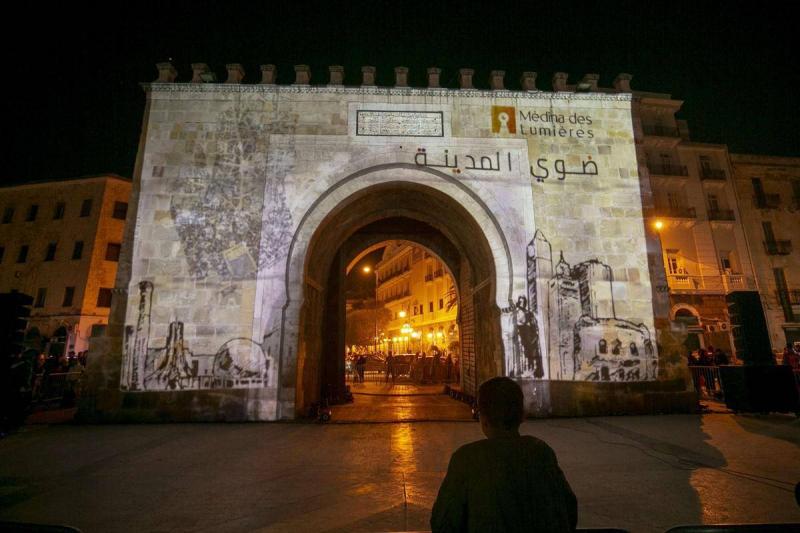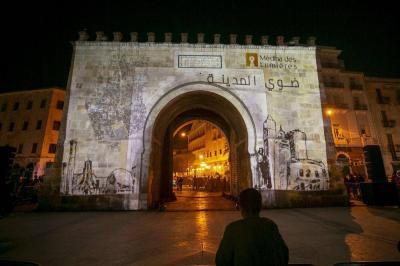The customs of the Tunisian people during the month of Ramadan differ from those of other Arab countries, both in how they welcome and celebrate this month and in their religious celebrations and daily life throughout its duration. Typically, Tunisian families prepare for the month of fasting with various arrangements during the last two weeks of Sha'ban. Most housewives start buying new utensils to beautify the kitchen and dinner table in the days leading up to Ramadan, a long-standing Tunisian tradition. They also polish silver and copper pots at the artisans' workshops for use specifically in Ramadan celebrations, while men ensure the home is in a new state by repainting walls and changing the colors of the house, a practice passed down through many Tunisian families from generation to generation.
As a result, all Tunisian markets experience significant activity and trade during this time, bustling with people in all cities and villages buying everything necessary for the month of fasting, despite the rise in prices of various goods during this period. Celebrations of Ramadan begin for Tunisians on the night preceding the arrival of the month, which they refer to as "Yom al-Qarsh." This day involves inviting relatives, friends, and neighbors for a final meal before the fasting begins.
As the month approaches, some families organize a religious evening known as "Salamiya," which is a Sufi-style gathering where hymns and prayers are recited, and neighbors, relatives, and friends are invited to participate in the remembrance and recitation of prayers. This tradition spreads across several governorates such as Tunis, Sousse, Sfax, and Mahdia, where families wear traditional Tunisian attire.
Moreover, during "Yom al-Qarsh," many families celebrate in various ways, preparing a variety of Tunisian dishes such as "Rfissa," made with bread and dates, and "Mdamja," a fried dough paper filled with dates and sugar. In most northeastern regions, they serve "A'sida" or pastries with raisins, while in the northwest of Tunisia, they prepare "A'sida" with flour, honey, and ghee. In the southern regions, residents make "Borkoukh," and families in coastal areas cook "Couscous."
On this night, Tunisians engage in family visits and exchange greetings for the arrival of Ramadan. Café owners and merchants also prepare for the month, with streets and main roads decorated with lanterns and lights, especially in the narrow alleys of old cities that remain vibrant throughout the nights of Ramadan. Traditional sweet shops and cafés proliferate, and "Festival of the City" events are held, celebrating "Maalouf" and old Tunisian songs.
Tunisians celebrate certain nights of this month in unique ways compared to other Arab countries. On the 15th night of fasting, families primarily prepare a dish of lamb couscous to mark the halfway point of the month. Sheep are sacrificed that night to distribute the meat to the needy and to prepare iftar tables in the streets. Families exchange visits that night, and the traditions of Tunisians differ on the 27th night of Ramadan from other nights of the month.
Despite the sound notifications from phones and clocks, the tradition of "Al-Masaharati" has not disappeared in many Tunisian villages and cities. In Tunisia, the "Masaharati" is called "Babotbila," named after the drum he beats to wake people. A young man or an elderly man undertakes this task in each area, and despite its decline in many places, some continue to uphold this tradition every Ramadan.
Abdelhamid Arfaoui, who has been working as a Masaharati for three years, expresses his love for this profession since childhood. After retiring from his job in a factory, he insisted on becoming a Masaharati during Ramadan to preserve this tradition in Tunisia. He typically wears traditional Tunisian clothing, such as a "juba," "chachia," and "balgha." He wanders through the alleys an hour and a half before suhoor, waking people with his drum, receiving only a small amount of money from families as a token of appreciation, especially during the holiday.




